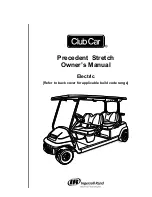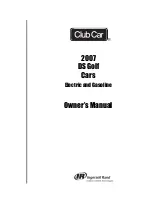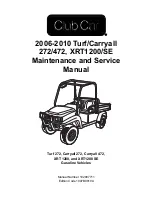
9.6
BATTERY DISPOSAL
Batteries contain substances potentially hazardous to human health and nature, never throw away batteries with
household waste or dump batteries in the nature, parking lots or elsewhere!
When batteries reach their end of life, they must be disposed of in an environmentally correct fashion, consult
local regulations and authorities to find the recycling facility nearest you, and dispose of the batteries accordingly,
an authorized ELLWEE service company can help you.
9.7
BATTERY REMOVAL AND INSTALLATION
Do not attempt to disconnect or repair the batteries, contact an authorized ELLWEE service company instead.
10
BATTERY CHARGER
•
Download separate Charger Instruction Manual at www.ELLWEE.com
10.1.
IMPORTANT SAFETY INSTRUCTIONS
attention: read carefully the operating manual before using the battery charger.
(a)
Failure to install and operate the charger in accordance with these instructions may result in
damage to the charger or injury to the operator
(b)
Working in the vicinity of a lithium-ion battery is dangerous, batteries generate explosive gases
during normal battery operation, for this reason it is of the utmost importance that each time
before using your charger, you read and follow the instructions provided exactly
(c)
Explosive gases may result from charging, provide adequate ventilation during charging. Never
smoke or allow an open spark or flame in the vicinity of the battery
(d)
To reduce the risk of injury, charge only lithium-ion type batteries (be sure that the selected
charging curve is suitable for the type of batteries that must be charged). Do not attempt to
charge any other type of chargeable or non- rechargeable battery; these batteries may burst,
causing personal injury and damage
(e)
Never charge a frozen battery
(f)
Study all battery manufacturer's specific precautions such as recommended rates of charge
(g)
Never place the charger directly above or below the battery being charged; gases or fluids from
the battery will corrode and damage the charger, locate the charger as far away from the battery
as dc cables permit
(h)
Do not attempt to open the charger, there is risk of electric shock even if the charger is
unplugged, there is no user serviceable components inside
(i)
If safe operation of the charger can no longer be ensured, stop and secure it against operation
(j)
If the supply cord is damaged, it must be replaced by a qualified person in order to avoid hazard
(k)
It is recommended to disconnect the ac power before connecting or disconnecting the charger to
the battery





































